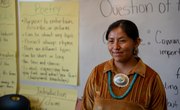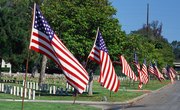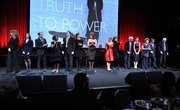Discussion of freedom is a critical part of teaching American history and politics to young students. An excellent basis for these lessons about independence is the First Amendment to the United States Constitution, which is part of the Bill of Rights, which protects the rights of the individual. Even very young students can develop a strong appreciation for their right to express opinions and attend meetings or religious services. Older children can be assigned to exercise their freedom of speech by writing letters to local media or studying famous defenders of freedom throughout history.
Step 1
Define the First Amendment to students to give a literal definition of freedom in the United States. Consider writing a pop quiz in which the students are asked to list the various freedoms included in the First Amendment. Ask children to share ways they have exercised their freedoms in school and in daily life with their family.
Step 2
Request that children consider and share certain actions that would not be protected by the First Amendment. Have volunteers share examples of spoken or printed words that should not be protected by the First Amendment if they can think of any.
Step 3
Assign older students to write brief, reflective essays about their own experience with the First Amendment. Prompt the students to choose from a series of possible topics. Children may be compelled to write about their own experiences allowing others to speak even though they disagreed with the other parties' point of view. Students could also choose the option of writing letters about current events to elected political officials or local media.
Step 4
Study individuals throughout American history who have spoken freely to protect the rights of a group. Historical heroes could include Abraham Lincoln, Martin Luther King, Jr. or Rosa Parks. Older students could be assigned to write a brief report or presentation on these historical figures.
Related Articles
Writer Bio
Jasmine Henry has been a professional freelance writer since 2008. She has published literary criticism in the academic journal "The Birch." Henry holds a Bachelor of Arts in Russian and environmental science from Willamette University in Salem, Ore.











